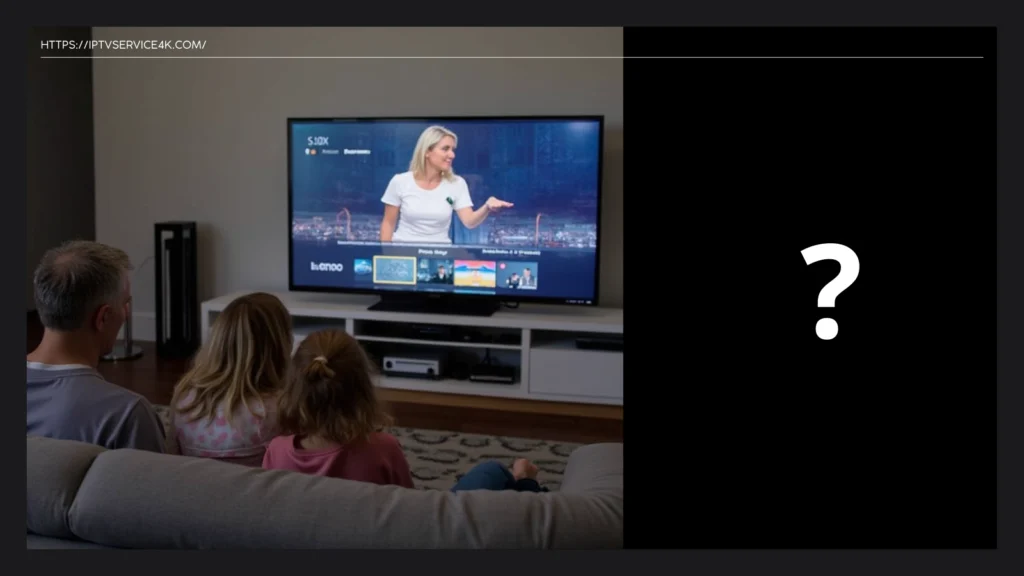In the ever-evolving world of digital entertainment, IPTV (Internet Protocol Television) has emerged as a game-changer. Unlike traditional cable or satellite TV, IPTV delivers television content over the internet, offering viewers greater flexibility, a wider range of channels, and on-demand options. But what exactly is IPTV, and how does it work? In this article, we’ll dive deep into the world of IPTV, exploring its technology, benefits, and how you can make the most of it.

What is IPTV?
IPTV (Internet Protocol Television) is a system where television services are delivered using the internet protocol suite over a packet-switched network such as the internet, instead of being delivered through traditional terrestrial, satellite, or cable formats. In simpler terms, IPTV allows you to stream live TV channels, movies, and shows directly over the internet.
This technology has gained popularity due to its ability to provide a more personalized and interactive viewing experience. With IPTV, you’re not limited to a fixed schedule; instead, you can watch what you want, when you want.
How Does IPTV Work?
To understand how IPTV works, let’s break it down into a few key steps:
1. Content Acquisition
IPTV providers source content from various broadcasters, studios, and networks. This content is then encoded into a digital format suitable for streaming over the internet.
2. Content Storage
The encoded content is stored on servers, often referred to as IPTV headends. These servers are responsible for managing and distributing the content to users.
3. Content Delivery
When a user requests a specific channel or video, the IPTV system retrieves the content from the server and delivers it to the user’s device via the internet. This process is known as streaming.
4. User Interface
The content is displayed on the user’s device through an IPTV app or set-top box. The interface allows users to browse channels, access on-demand content, and use features like the Electronic Program Guide (EPG).
Types of IPTV Services
IPTV services can be categorized into three main types:
1. Live Television
This allows users to watch live broadcasts of TV channels in real-time, just like traditional TV. Examples include live sports, news, and events.
2. Video on Demand (VOD)
VOD services let users select and watch movies, TV shows, or other content whenever they want. Popular examples include Netflix and Hulu.
3. Time-Shifted Media
Also known as catch-up TV, this feature allows users to watch previously aired content at their convenience. For example, if you missed a live show, you can watch it later using time-shifted media.
Benefits of IPTV
- Flexibility: Watch your favorite shows anytime, anywhere, on any device.
- Wide Range of Content: Access thousands of channels and on-demand content from around the world.
- Cost-Effective: Often more affordable than traditional cable or satellite TV.
- Interactive Features: Use features like pause, rewind, and record for live TV.
- High-Quality Streaming: Enjoy HD and 4K streaming with a stable internet connection.
If you’re looking for a reliable IPTV service, consider IPTVService4K, which offers a vast selection of channels and high-quality streaming.
How to Set Up IPTV
Setting up IPTV is simple and can be done in a few steps:
1. Choose an IPTV Provider
Select a reputable IPTV provider like IPTVService4K that offers the channels and features you need.
2. Get the Necessary Equipment
You’ll need a compatible device such as a smart TV, streaming device (e.g., Amazon Fire Stick), or IPTV set-top box.
3. Install the IPTV App
Download and install the IPTV app provided by your service provider. Some popular apps include Smart IPTV, IPTV Smarters, and VLC Media Player.
4. Enter Your Subscription Details
Log in to the app using your subscription credentials or enter the M3U playlist URL provided by your IPTV provider.
5. Start Streaming
Once everything is set up, you can start browsing channels and enjoying your favorite content.
Tips for a Better IPTV Experience
- Use a High-Speed Internet Connection: A minimum speed of 10 Mbps is recommended for smooth streaming.
- Use a VPN: Protect your privacy and access geo-restricted content by using a VPN.
- Update Your App Regularly: Ensure you’re using the latest version of your IPTV app for optimal performance.
- Choose a Reliable Provider: Opt for a trusted provider like IPTVService4K to avoid buffering and downtime.
Frequently Asked Questions (FAQs)
1. What devices support IPTV?
IPTV is compatible with a wide range of devices, including smart TVs, smartphones, tablets, streaming devices (e.g., Amazon Fire Stick), and computers.
2. Is IPTV legal?
Yes, IPTV itself is legal. However, the legality of the content you access depends on your IPTV service provider. Always use a reputable provider like IPTVService4K.
3. Do I need a smart TV for IPTV?
No, you can use IPTV on non-smart TVs by connecting a streaming device or set-top box.
4. How much does IPTV cost?
The cost varies depending on the provider and the package you choose. Many providers offer affordable plans with a wide range of channels.
5. Can I use IPTV without an internet connection?
No, IPTV requires an active internet connection to stream content.
Conclusion
IPTV is revolutionizing the way we consume television content. With its flexibility, wide range of channels, and on-demand options, it’s no wonder that more and more people are switching to IPTV. By understanding how IPTV works and following the tips in this guide, you can enjoy a seamless and personalized viewing experience.
For the best IPTV experience, consider partnering with a trusted provider like IPTVService4K. Their high-quality service and extensive channel lineup ensure you’ll never miss your favorite shows or live events.
